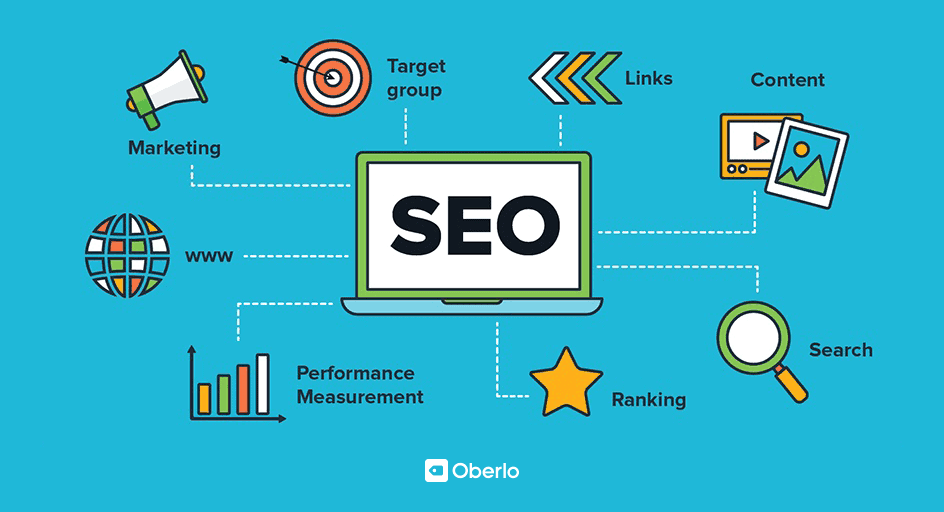So you’ve created a stunning website with high-quality content that is sure to attract visitors, but did you know that there is more to optimizing your website than just the words on the page?
Enter Technical SEO – the behind-the-scenes magic that ensures your website is easily found by search engines. In this article, we will explore the importance of Technical SEO, its key components, and how it can help improve your website’s visibility online.
Whether you’re a seasoned SEO pro or just starting out, understanding the ins and outs of Technical SEO is crucial for driving organic traffic and maximizing your online presence. Buckle up and get ready to take your website to new heights!
Technical SEO
Technical SEO refers to the process of optimizing a website’s technical aspects in order to improve its visibility and performance in search engine rankings. It involves various elements such as website performance, mobile friendliness, site structure, URL structure, website security, XML sitemaps, canonicalization, robots.txt, redirects, and page speed. These elements play a crucial role in ensuring that search engines can crawl and index your website effectively, and that users have a positive experience when interacting with your site.
What is Technical SEO?
Technical SEO can be defined as the practice of optimizing the technical elements of a website to improve its visibility and performance in search engine rankings. It focuses on improving the website’s infrastructure, code, and backend processes to make it easier for search engines to crawl and understand the content. By implementing technical SEO best practices, you can ensure that your website is optimized for search engines and provides a positive user experience.
Technical SEO is different from on-page SEO, which focuses on optimizing individual web pages to improve their visibility and relevance in search engine results. While on-page SEO primarily deals with content and keyword optimization, technical SEO focuses on the technical aspects of a website that affect its crawlability, indexability, and overall performance.
Technical SEO plays a crucial role in search engine optimization (SEO) because it helps search engines understand and rank your website more effectively. By optimizing these technical elements, you can improve your website’s chances of ranking higher in search engine results and attract more organic traffic.
Why is Technical SEO Important?
Technical SEO is important for several reasons:
1. Improves Website Crawling and Indexing
Technical SEO helps search engines crawl and index your website more efficiently. By optimizing your website’s technical elements, such as XML sitemaps and robots.txt, you can provide clear instructions to search engine bots on which pages to crawl and which ones to exclude. This ensures that your website is effectively indexed by search engines, making it easier for users to find your content.
2. Enhances User Experience
Technical SEO also improves the overall user experience on your website. A website that loads quickly, is easy to navigate, and displays correctly on different devices enhances user satisfaction. By optimizing elements such as page load speed, mobile friendliness, and site structure, you can create a user-friendly website that keeps visitors engaged and encourages them to explore further.
3. Affects Search Engine Rankings
Technical SEO plays a significant role in search engine rankings. Search engines consider various technical factors, such as website performance and mobile friendliness, when determining where to rank your website in search results. By ensuring that your website meets these technical requirements, you can increase its chances of ranking higher and attracting more organic traffic.
4. Prevents Duplicate Content
Technical SEO helps prevent duplicate content issues, which can negatively impact your search engine rankings. By implementing canonicalization, you can indicate the preferred version of a URL when multiple URLs have similar or identical content. This helps search engines understand which page to index and rank, avoiding any confusion or penalties for duplicate content.
5. Increases Website Speed and Performance
Website speed and performance are important factors in both user experience and search engine rankings. A slow-loading website can result in higher bounce rates and decreased user engagement. By optimizing page load speed and implementing caching techniques, you can improve your website’s speed and overall performance, providing users with a seamless browsing experience.
6. Optimizes for Mobile Users
With the increasing use of mobile devices for internet browsing, optimizing your website for mobile users has become crucial. Technical SEO ensures that your website is mobile-friendly and responsive, adapting to different screen sizes and providing a seamless experience to mobile users. Mobile optimization is not only important for user experience but also for search engine rankings, as search engines prioritize mobile-friendly websites in mobile search results.
Key Elements of Technical SEO
Technical SEO encompasses several key elements that contribute to the overall optimization of a website. The following elements should be considered when implementing technical SEO best practices:
1. Website Performance
Website performance refers to how fast your website loads and performs. It includes factors such as page load speed, image optimization, and minifying CSS, HTML, and JavaScript. Optimizing these aspects can improve your website’s loading time, making it more user-friendly and search engine-friendly.
2. Mobile Friendliness
Mobile friendliness is a vital aspect of technical SEO due to the increasing number of mobile users. It involves ensuring that your website is responsive and displays correctly on different mobile devices. Implementing responsive web design, addressing mobile usability issues, and considering accelerated mobile pages (AMP) can help optimize your website for mobile users.
3. Site Structure and Navigation
The site structure and navigation of your website play a crucial role in user experience and search engine crawling. A logical hierarchy, clear internal linking, and breadcrumb navigation aid in guiding users and search engine bots through your website effectively. An organized site structure and navigation system make it easier for users to find and navigate your content, improving their overall experience.
4. URL Structure
The URL structure of your website should be descriptive, SEO-friendly, and easy to understand. Descriptive URLs that include relevant keywords and are not excessively long or complex are more user-friendly and easier for search engines to interpret. Implementing canonical URLs and managing URL redirects also contribute to a well-optimized URL structure.
5. Website Security
Ensuring the security of your website is crucial for both user trust and search engine rankings. Implementing HTTPS and obtaining SSL certificates protect user data and enhance website security. Regularly monitoring and protecting against malware and hacking further strengthens your website’s security, preventing any potential damage to your online presence.
6. XML Sitemaps
XML sitemaps provide search engines with a comprehensive list of all the pages on your website that you want them to crawl and index. By creating and submitting an XML sitemap, you can ensure that search engines discover and understand your website’s structure, allowing for efficient indexing and improved visibility in search results.
7. Canonicalization
Canonicalization is the process of indicating the preferred version of a URL when there are multiple URLs with similar or identical content. By implementing canonical tags, you can avoid duplicate content issues and guide search engines to the correct URL to index and rank, improving your website’s overall SEO.
8. Robots.txt
The robots.txt file controls which pages of your website search engine bots can crawl and index. By properly configuring the robots.txt file, you can indicate which pages to exclude from indexing, protecting sensitive content and preventing the crawl budget from being wasted on irrelevant pages.
9. Redirects
Redirects are used to guide users and search engines from one URL to another when a page is permanently moved, deleted, or temporarily unavailable. Properly implementing redirects ensures that users and search engines can access the correct content, preventing broken links and maintaining search engine rankings.
10. Page Speed
Page speed refers to how fast your web pages load. It is a crucial factor in user experience and search engine rankings. Optimizing code and server response, implementing caching techniques, and minimizing external requests can significantly improve your website’s page speed and overall performance.
In conclusion, technical SEO plays a vital role in optimizing a website for search engines and users. By addressing various technical elements such as website performance, mobile friendliness, site structure, URL structure, website security, XML sitemaps, canonicalization, robots.txt, redirects, and page speed, you can enhance your website’s visibility, user experience, and search engine rankings. Implementing technical SEO best practices ensures that search engines can effectively crawl and index your website, making it easier for users to find and engage with your content.









